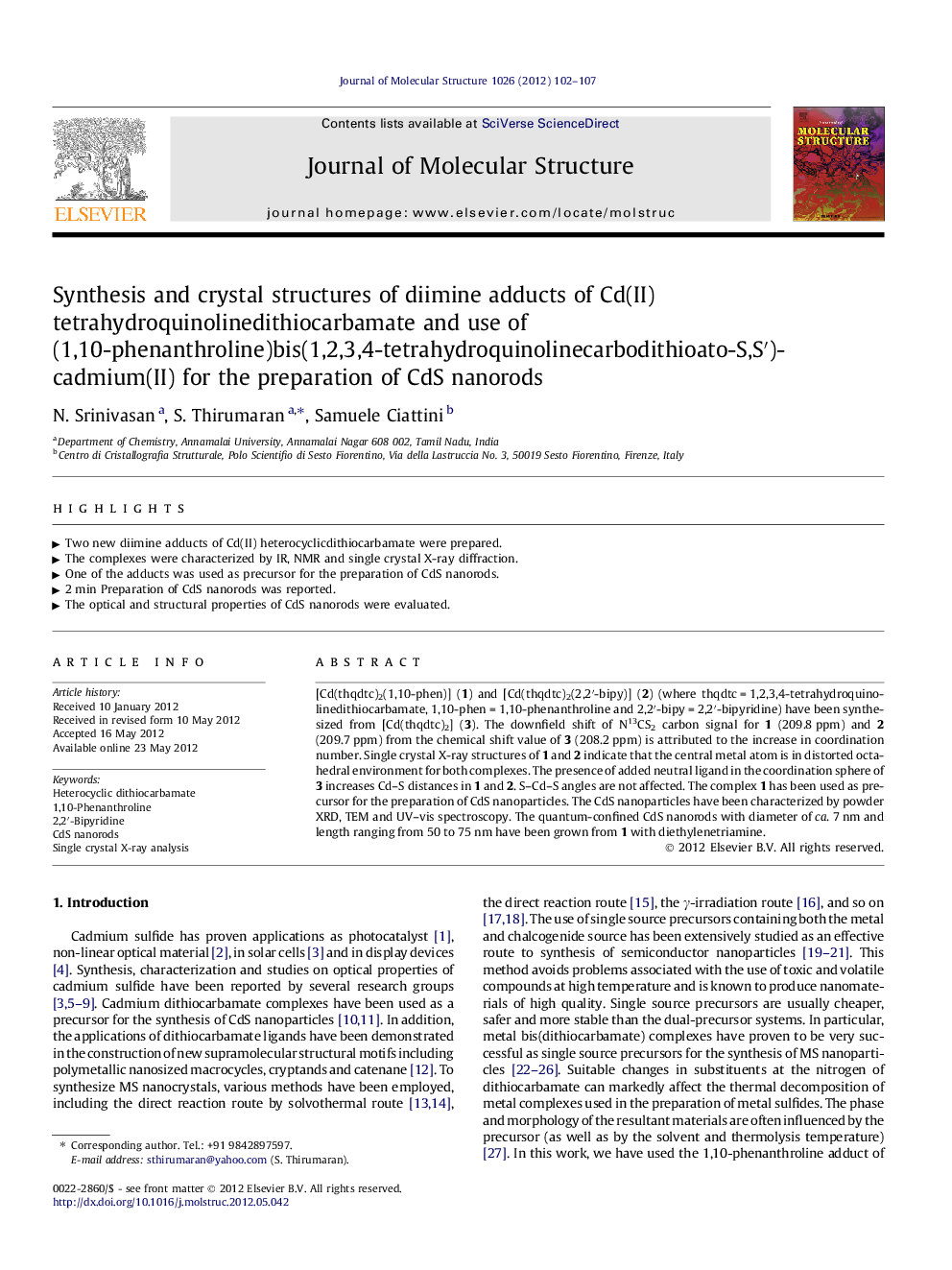| Article ID | Journal | Published Year | Pages | File Type |
|---|---|---|---|---|
| 1409167 | Journal of Molecular Structure | 2012 | 6 Pages |
[Cd(thqdtc)2(1,10-phen)] (1) and [Cd(thqdtc)2(2,2′-bipy)] (2) (where thqdtc = 1,2,3,4-tetrahydroquinolinedithiocarbamate, 1,10-phen = 1,10-phenanthroline and 2,2′-bipy = 2,2′-bipyridine) have been synthesized from [Cd(thqdtc)2] (3). The downfield shift of N13CS2 carbon signal for 1 (209.8 ppm) and 2 (209.7 ppm) from the chemical shift value of 3 (208.2 ppm) is attributed to the increase in coordination number. Single crystal X-ray structures of 1 and 2 indicate that the central metal atom is in distorted octahedral environment for both complexes. The presence of added neutral ligand in the coordination sphere of 3 increases Cd–S distances in 1 and 2. S–Cd–S angles are not affected. The complex 1 has been used as precursor for the preparation of CdS nanoparticles. The CdS nanoparticles have been characterized by powder XRD, TEM and UV–vis spectroscopy. The quantum-confined CdS nanorods with diameter of ca. 7 nm and length ranging from 50 to 75 nm have been grown from 1 with diethylenetriamine.
► Two new diimine adducts of Cd(II) heterocyclicdithiocarbamate were prepared. ► The complexes were characterized by IR, NMR and single crystal X-ray diffraction. ► One of the adducts was used as precursor for the preparation of CdS nanorods. ► 2 min Preparation of CdS nanorods was reported. ► The optical and structural properties of CdS nanorods were evaluated.
